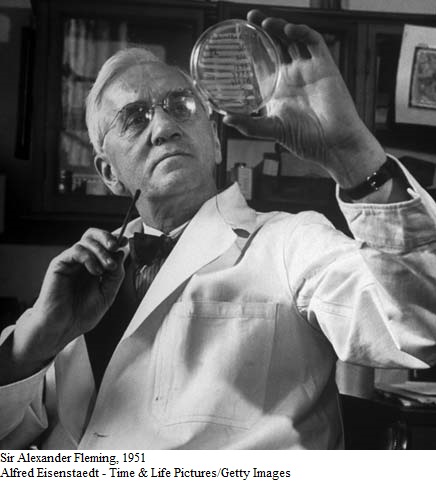News
January 20, 2016
By Nuritas
The Past, Present and Future of Antibiotics – Light at the End of the Tunnel

By: Niamh Mohan
While traces of the antibiotic tetracycline have been identified as far back as 550 CE in the human remains of Egyptians from the Gupta Age, the ‘antibiotic era’ as we know it followed centuries later [1]. Paul Ehrlich’s progressive ideas in the 1900’s investigated targeted drugs which specifically pinpointed one pathogen. His triumph came in 1909 when he designed Arsphenamine, which successfully treated syphilis, a rampant bacterial disease fatal for most at the time [2]. The next breakthrough, hailed as a revolutionary medical discovery, was stumbled upon accidentally in 1928 by Alexander Fleming when his bacterial cultures became contaminated with penicillin-producing mould which subsequently killed his bacterial cultures [3]. World War II commenced in the following decade and the demand for antibiotics surged. The pressure and volume of medical emergencies brought on by the war lead to the production of penicillin in 1945 which was 20 times more effective than its 1939 prototype. Fleming, along with two other scientists, Florey and Chain shared the Nobel prize for their valiant contributions to medicine in 1945 [4].

The following 20 years were prosperous and various antibiotic classes were identified. However, since the 1980s the pipeline has largely run dry and the world is now facing a health epidemic. Impressively, Fleming was the first to foresee and raise concern about the potential of bacteria developing resistance due to the exploitation of antibiotics, a problem which now poses a major threat to healthcare [5]. Overuse of antibiotic agents in livestock, detergents, and medical prescriptions has resulted in inheritable acquired resistance as the bacteria undergo gene mutations during DNA replication. The last line of antibiotic defence was breached in 2015 meaning patients, such as those infected with the ‘superstrain’ of polymyxin resistant E.coli, are very vulnerable with limited treatment options. Alternatives to antimicrobial agents in medicine are desperately needed, and revision of antibacterials and preservatives on a wider scale including food, agriculture, cleaning products, animal supplements, etc are essential to halt the progression of the bacterial ‘resistome’ [6].

As microbes evolve, so must our approaches to tackling them. Until 1970, four classes (penicillins; cephalosporins; quinolones; macrolides) dominated the antibiotic market. Altering the drug scaffold produced 2nd, 3rd and 4th generations of these antibiotics, however these unfortunately stalled bacterial resilience for increasingly limited periods [7]. The ‘ideal antibiotic’ has been described by Lewis and Levy at the US Forum on Microbial Threats as a prodrug with a novel mechanism of action inhibiting resistance, broad spectrum activity, limited bioaccumulation and self destruction [8], [9]. At the same forum, Fischerbach recognised the importance of the completion of the human genome project in revolutionising genomic analysis for drug discovery [7]. This comprehensive mapping of building blocks teamed with bioinformatic tools aids the unraveling of antimicrobials from nature such as peptides, which have been identified as major components in endogenous host defences such as snake venom, frog slime secretions and stinging nettles. Nuritas™ is at the heart of this research, unlocking bacteriocidal weapons to tackle bacteria by going back to nature to find alternative solutions in the fight against environmental pathogens. Peptides offer a unique solution as they are able to rapidly target the cytoplasmic membrane, and potentially some intracellular components, thus greatly reducing the development of microbial DNA modifications for resistance [10]. Nuritas™ uses a dual-pronged attack to discover effective peptides by combining artificial intelligence and DNA analysis to data-mine billions of bioactive peptides.
The multi-drug resistance crisis has various layers to its complexity and will require the implementation of a multifaceted approach towards its solution. Alternative antimicrobials such as peptides, in combination with the concerted efforts of various groups in society such as microbiologists, doctors, educators, policy makers, regulatory bodies, pharmaceutical companies, farmers, and the public’s adherence to antibiotic stewardship will be vital for the medicine of tomorrow.
References
[1] M. Nelson, A. Dinardo, J. Hochberg, and G. Armelagos, “Brief communication: Mass spectroscopic characterization of tetracycline in the skeletal remains of an ancient population from Sudanese Nubia 350-550 CE,” Am J Phys Anthr., vol. 143, pp. 151–154, 2010.
[2] P. Ehrlich and S. Hata, “Die Experimentelle Chemotherapie der Spirilosen,” Berlin Jul. Springer, 1910.
[3] A. Fleming, “On antibacterial action of culture of Penicillium, with special reference to their use in isolation of B. influenzae.,” Br. J. Exp. Pathol, vol. 10, pp. 226–236, 1929.
[4] NobelPrize.org, “The Nobel Prize in Physiology 1945,” Nobel Media AB, 2014. [Online]. Available: http://www.nobelprize.org/nobel_prizes/medicine/laureates/1945/. [Accessed: 11-Jan-2016].
[5] I. Rustam, “A Brief History of the Antibiotic Era: Lessons Learned and Challenges for the Future,” Front. Microbiol., vol. 1, p. 134, 2010.
[6] L. Rice, “Federal funding for the study of antimicrobial resistance in nosocomial pathogens: No ESKAPE,” J. Infect. Dis., vol. 197, no. 8, pp. 1079–1081, 2008.
[7] M. Fischerbach and C. Walsh, “Antibiotics for emerging pathogens,” Science (80-. )., vol. 325, no. 5944, pp. 1089–1093, 2009.
[8] K. Lewis, “Persister cells, dormancy, and infectious disease,” Nat. Rev. Microbiol., vol. 5, no. 1, pp. 48–56, 2007.
[9] S. Levy, The antibiotic paradox: How the misuse of antibiotics destroys their curative powers, 2nd Editio. New York: Perseus Publishing, 2002.
[10] S.-C. Park, Y. Park, and K.-S. Hahm, “The role of antimicrobial peptides in preventing multidrug-resistant bacterial infections and biofilm formation.,” Int. J. Mol. Sci., vol. 12, no. 9, pp. 5971–92, Jan. 2011.





 Previous
Previous
